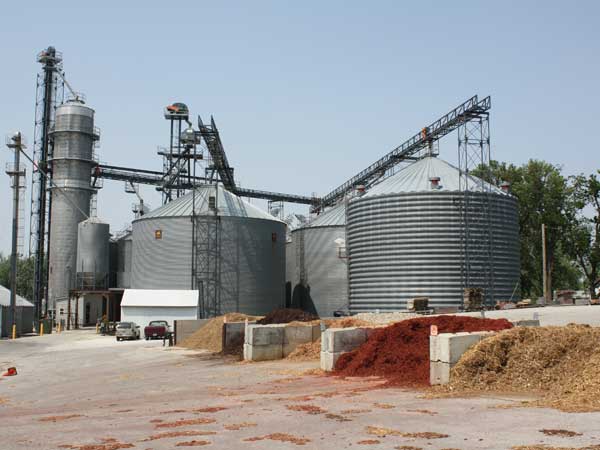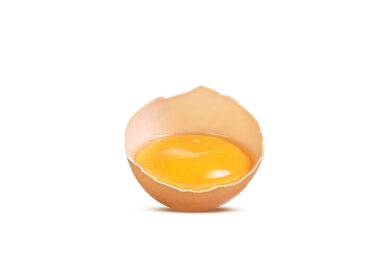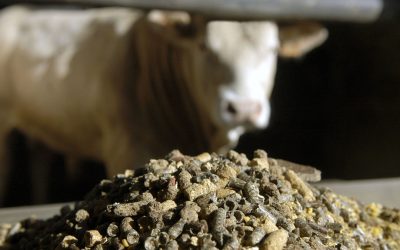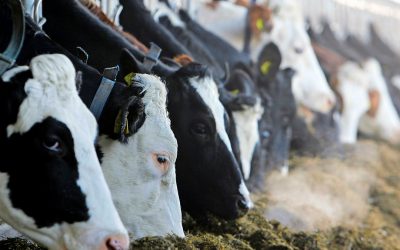Juergens Produce & Feed: Staying competitive in the heart of Iowa

USA’s major pig producing state of Iowa is located in the heart of the Corn Belt, hence feed supplies are abundant and feed mills and ethanol plants are everywhere. Juergens Produce & Feed, headquartered in Carroll, is one of them. How do they keep their business going in the heart of the feed industry?
Iowa consists of corn – that is fair to say when driving to the town of Carroll, in the heart of the state. Villages or towns are scarce; left or right, for miles and miles, only corn fields stretch out as far as the eye can see. Often, ethanol plants or feed mills are the only objects rising up high above the green landscape, as they thrive with this abundance of raw materials.
Juergens Produce & Feed Company is located just outside Carroll, at about two hours’ drive from state capital Des Moines. The feed mill is equipped with a professional agricultural shop, where apart from products for animal feed production, locals can also buy large bags of dog and cat feeds, lawn seeds or fertiliser and barbecue equipment.
A familiar red-and-white checkerboard symbol right above the entrance reveals that the company supplies products on behalf of Purina Mills. “We have been a dealer since 1951,” explains Pete Juergens, third-generation Juergens in the family-owned business. He and his brother Aaron lead the company together with their father Ron, who took over from his father Vernis. It was he who started off the agricultural business in 1945, at that time focusing on buying cream and eggs.
Nowadays, Juergens Feed Produce has expanded into a wide range of businesses, which apart from feed production includes a lawn and landscape business, a trading business, the manufacturing of environmental control systems, a seed company and swine production (see box).
Despite this diversification, feed production remains the core market for the Juergens family business, which consists of two feed mills and four warehouses. “We produced 60,000 tonnes (54,000 metric t) of feed in 2010, last year this was equivalent to $1.75 million in sales,” says Brad Woodard, general manager of the Juergens feed division. “Probably 99% of that is for swine production.”
Feedstuffs
With the USA’s strongest density of corn fields, feed mills, ethanol plants and pork producers, it may come as no surprise that competition on the feed market is rather strong in Iowa. Every dime counts, for both suppliers as well as customers. The Carroll plant mainly uses locally harvested feedstuffs, like corn. Main ingredients for feed production include corn, soybean meal and dried distillers grains and solubles (DDGS), the latter having become available since 2006 on the market in Western Iowa – and their market share is still growing. Recently, the Agriculture Department (USDA) revealed that corn demand from ethanol plants had surpassed demand from livestock production.Juergens Produce & Feed started to work with DDGS in the summer of 2006, recalls Woodard, contracting it nowadays from five ethanol plants in the area. He says, “It was a purely financial decision. We are always looking for suitable ingredients to provide a low-cost diet to our customers, which still get them the profit they are looking for. When utilising DDGS, we did not have to make any adjustments to machinery or processes. DDGS handles much the same as soybean meal.”
Corn is brought in from approximately 100 local corn growers from a 50 km radius around Carroll. Soybean meal is obtained from the local cooperative AGP plant, located in Manning, about 24 km to the south. This site mills the soybeans after having been processed locally.
Vitamins and trace mineral (VTM) supplements are usually obtained through Land O’Lakes, owner of the Purina Mills brand in the United States. For amino acids, Juergens looks further afield – the lysine is even sourced from China. L-Lysine is provided by the Chinese Dacheng Group, one of the largest suppliers in the Far East. The product is substantially more affordable than US-produced lysine. “We feel we get the benefits from that decision,” Woodard says, adding that the lysine has proved to be stable and of good quality.
Juergens only offers meal and does not pelletise. Providing a particle size guarantee is a service Juergens offers to producers, explains Woodard. A sophisticated high-sensitivity sieve is available at the Carroll site continuously checking the meal product to assure a standard particle size. “The feed needs to be consistent, with 500 micron particle size,” Woodard says. “This way it keeps its flowability and yields the best conversion rates to our genetics potential. You can grind feed until it is ground into basically a powder – which is good for the animals. But if the grind gets too small, one can’t handle it. So we have got to make it flow into the system.”
A perplexing future
Woodard calls the future of the feed industry both for Juergens and Iowa somewhat ‘perplexing’. “On one hand we have an expanding ethanol industry, which leads to increased DDGS supplies, and thus lower input cost of ingredients. We also have roughly 13 million acres (53,000 km2) of corn to be harvested this fall in the state. The increased feed cost is something we have to keep a close eye on with the volatility of the hog industry. The livestock business has shifted in the past 20 years from small family farms to more commercial operations in our area, which adds a new dynamic. The larger operations can withstand more volatility, but also demand more from us as a feed company. The obstacle we face as an industry is getting the message out there, that what we are doing in animal agriculture directly effects what consumers are paying at the grocery store. The stronger we can position ourselves on a foreign front with countries like China and Korea for the export of our pork, will determine our place in global agriculture into the future”.
Pig production One of the finisher facilities is well known for a remarkable approach to reduce odours inside the pig houses. A citric acid mix is sprayed out on top of the animals, as well as in manure pits, in order to bind the ammonia. It leaves any visitor to the pig farms carrying a lemonade smell out rather than an ammonia odour. The concept is part of Juergens’ environmental control systems business within Juergens Produce & Feed. |











